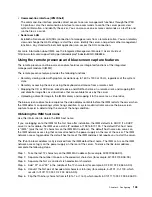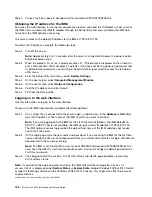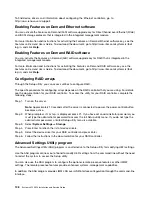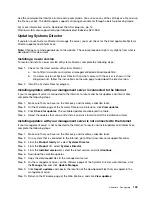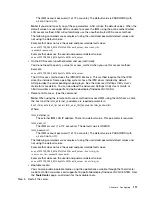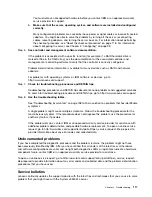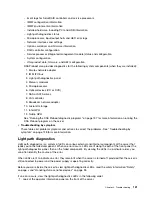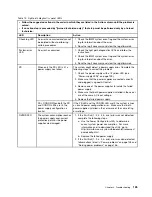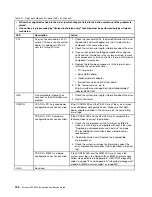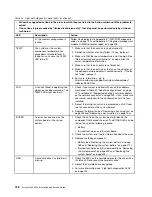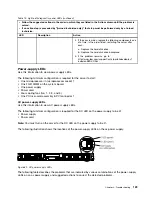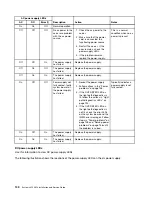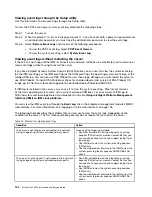
Step 1.
Is the server part of a cluster?
•
No:
Go to Step 2 on page 119.
•
Yes:
Shut down all failing servers that are related to the cluster. Go to Step 2 on page 119.
Step 2.
Complete the following steps:
a.
Check the power supply LEDs (see “Power-supply LEDs” on page 129).
b.
Turn off the server and all external devices.
c.
Check all internal and external devices for compatibility at http://www.lenovo.com/us/en/
serverproven/.
d.
Check all cables and power cords.
e.
Set all display controls to the middle positions.
f.
Turn on all external devices.
g.
Turn on the server. If the server does not start, see “Troubleshooting by symptom” on page 138.
h.
Check the system-error LED on the operator information panel. If it is lit, check the light path
diagnostics LEDs (see “Light path diagnostics” on page 121).
i.
Check for the following results:
• Successful completion of POST (see “POST” on page 135 for more information)
• Successful completion of startup, which is indicated by a readable display of the
operating-system desktop
Step 3.
Is there a readable image on the monitor screen?
•
No:
Find the failure symptom in “Troubleshooting by symptom” on page 138; if necessary, see
“Solving undetermined problems” on page 158.
•
Yes:
Run DSA (see “Running the DSA Preboot diagnostic programs” on page 137).
– If DSA reports an error, follow the instructions in Appendix C “DSA diagnostic test results” on
– If DSA does not report an error but you still suspect a problem, see “Solving undetermined
Diagnostic tools
The section introduces available tools to help you diagnose and solve hardware-related problems.
•
Light path diagnostics
Use light path diagnostics to diagnose system errors quickly. See “Light path diagnostics” on page 121
for more information.
•
Event logs
The event logs list the error codes and messages that are generated when an error is detected for the
subsystems IMM2, POST, DSA, and the server baseboard management controller. See “Event logs” on
page 133 for more information.
•
Integrated management module II
The integrated management module II (IMM2) combines service processor functions, video controller,
and remote presence and blue-screen capture features in a single chip. The IMM provides advanced
service-processor control, monitoring, and alerting function. If an environmental condition exceeds
a threshold or if a system component fails, the IMM lights LEDs to help you diagnose the problem,
records the error in the IMM event log, and alerts you to the problem. Optionally, the IMM also provides a
virtual presence capability for remote server management capabilities. The IMM provides remote server
management through the following industry-standard interfaces:
119
Summary of Contents for x3550 M4
Page 1: ...System x3550 M4 Installation and Service Guide Machine Type 7914 ...
Page 6: ...iv System x3550 M4 Installation and Service Guide ...
Page 178: ...164 System x3550 M4 Installation and Service Guide ...
Page 322: ...308 System x3550 M4 Installation and Service Guide ...
Page 828: ...814 System x3550 M4 Installation and Service Guide ...
Page 986: ...972 System x3550 M4 Installation and Service Guide ...
Page 990: ...976 System x3550 M4 Installation and Service Guide ...
Page 1005: ......
Page 1006: ......

